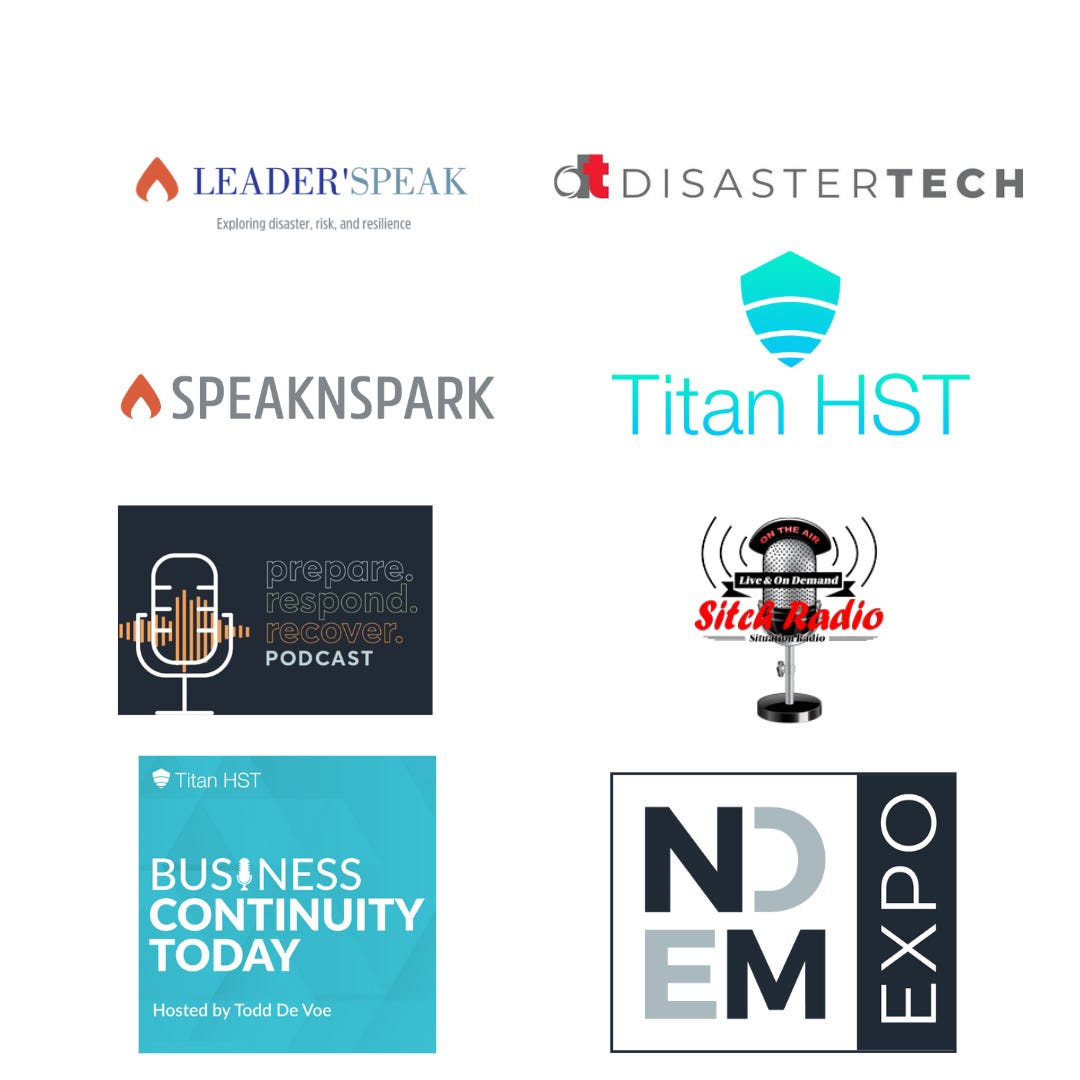A Mother's Day Message
Happy Mother's Day to all the mothers in the world. Our team wants you to know that we appreciate you. So when I was looking for a topic for this week, I felt that it was essential to address how disasters worldwide impact women.
Asako Okai, UN Assistant Secretary-General and Director of UNDP Crisis Bureau, stated in her piece, "Women are hit hardest in disasters, so why are responses too often gender-blind?" Women and children are 14 times more likely than men to die in a disaster.
As noted In the 2004 Indian Ocean Tsunami, 70 percent of the people that died were women.
So How Do Disasters Impact Women Differently?
New projections of global poverty by UN Women, UNDP, and the Pardee Center for International Futures estimate that, globally, 388 million women and girls will be living in extreme poverty in 2022 (compared to 372 million men and boys). But the outlook could be far worse. In a "high-damage" scenario, this number could balloon to 446 million (427 million for men and boys). This is a fundamental factor leading to higher mortality rates when compared to men during a disaster.
Because women are statistically poorer, they have far limited available financial resources, such as resilient housing. Women typically have limited financial safety nets and often less education to seek employment to rectify their collective situations. These social vulnerabilities explode during and after a disaster, ensuring a cycle of poverty that can become generational.
Why Water Matters?
In last week's Weekly Round-Up, we shared an article from the Crisis Response Journal on Africa's water security. We chose this piece because of its implications on climate migration. However, in many parts of the world, lack of access to clean water and poverty go hand in hand with women facing hazards. The female populations of developing nations are more likely to be responsible for retrieving water for their family. Water scarcity forces women to walk further from the safety of their homes to collect water, making them increasingly susceptible to sexual assault and rape. In Bangladesh, which is considered the epicenter of climate change, the World Health Organization has estimated that in 8 out of 10 homes, women are exposed to the risk of harassment, sexual assault, and rape when collecting water.
Women's Health Care and Disasters
One of the significant issues facing women worldwide is they are susceptible to poor health outcomes, violence, and inequalities in all stages of a disaster. In developing countries, women have less access to education, including basic survival skills such as swim safety. The lack of training reduces their ability to flee in rising floodwaters, for example. In these nations, Women traditionally are homebound, caring for their family members. They do not have access to the early warning systems, reducing their disaster preparedness and response times and increasing their chances of death. That is one of the significant factors explaining why 90 percent of the 140,000 people who died during the 1991 Bangladesh cyclone were female.
At any disaster, women have a statistically higher instance of forced marriage. They are exposed to sexual violence and can be required to engage in transactional sex for financial coping strategies. For example, after the 2004 tsunami in India, nine out of ten women affected by the disaster had experienced sexual violence within two years of the incident.
The impacts of disasters on women are not only in developing nations. After the 2011 Christchurch earthquakes, New Zealand saw a 40% rise in intimate partner violence in rural areas.
The Great East Japan Earthquake in 2011 proved that the issues facing women have not changed significantly. Although they're no longer blamed for disasters, they're not included in the relief process.
During a fact-finding trip to areas affected by the 2011 tsunami, Akiko Domoto, an environmentalist, feminist, and former governor of Tokyo's neighboring Chiba Prefectures, found those "in charge of a shelter in Minamisoma would not let the evacuees put up dividers. This meant there was no place for women to change, for infants to nurse, or for the elderly to change their diapers." In addition to a lack of privacy in shelters, there was also a lack of essential women's goods and an expectation that women would help with reconstruction by spending their days in the shelters cooking.
Women-Owned Business and Disasters In the U.S.
The National Institute of Standards and Technology (NIST) study showed that businesses run by women had been impacted more by disasters. They are more likely to close, experience decreased revenue, and lose customers. NIST surveyed 1,300 businesses. The study showed that women-owned businesses had fewer employees and reported less disaster preparedness than other businesses. And women-owned businesses are considered less essential to the community's overall economy. This is because most women-owned businesses are in the service industry.
Ariela Zycherman (who conducted the study) stated that "research like this demonstrates the ways preexisting social inequities threaten resilience. This information is essential for supporting just climate futures across communities."
Critical information might also lie in how businesses think of disaster resilience, what resources they are aware of and how they use them.
Moving toward an Antifragile Community
As we assess risk to the communities we serve, we must consider the part inequality plays in disaster recovery. A strong community includes personal empowerment of underserved populations, including women-owned businesses.
In our communities, we need to support small businesses in general. However, we need to provide tools and training to help historically underrepresented group-operated (HUGO) businesses thrive before and after a disaster.
References:
https://www.sciencedirect.com/science/article/pii/S2212096320300279
https://nextcity.org/urbanist-news/japans-sexism-in-natural-disasters
https://www.thejournal.ie/women-and-children-more-at-risk-at-times-of-disaster-1124615-Oct2013/
https://gh.bmj.com/content/6/4/e004377.abstract
Podcasts
The Todd De Voe Show
Planning Practitioner Program
EMI is announcing a new program, the Planning Practitioner Program. The Planning Practitioner Program (PPP) is a series of two (2) resident courses in Emmitsburg, MD, and an online Capstone. The PPP will have two (2) cohorts in FY23, beginning October 17th and January 9th. you can Apply at training.fema.gov
Todd DeVoe
Twitter handle: https://twitter.com/ToddTDeVoe
LinkedIn: https://www.linkedin.com/in/toddtdevoe/
Website: https://toddtdevoe.com/
James Greenshields
Twitter handle https://twitter.com/FEMA_EMI
LinkedIn https://www.linkedin.com/in/jamesgreenshields/
Website https://training.fema.gov/netc_online_admissions/
Instagram https://www.instagram.com/fema/?hl=en
Youtube https://www.youtube.com/user/FEMA
prepare. respond. recover
Looking to Private Forecasters to Save Lives
According to NOAA, severe weather issues (such as more frequent and intense heat waves and hurricanes dumping more than the usual rainfall) are an increasing liability to the economy, with 10 weather and climate disasters costing more than $1 billion each so far this year! In addition, western wildfires have also cost more than $40 billion during the past two years alone. Today, prepare.respond.recover. speaks with StormGeo’s TropicWatch Manager Chris Hebert to discuss how the rising costs of changing weather trends, advances in data-gathering and processing, and access to low Earth orbit (remove comma) have allowed StormGeo to lead the way in keeping critical businesses informed on storms heading their way.
If you would like to learn more about the Natural Disaster & Emergency Management (NDEM) Expo please visit us on the web -
https://www.ndemevent.com
Business Continuity Today
Do You Have A Wildfire Plan
The Southwest has moved from fire season to a 365-day threat of wildland fires. Why do you need a plan? Roughly 60,000 wildfires burn 8 million acres in the U.S. each year, according to the National Interagency Fire Center (NIFC). Wildland fires are more destructive and deadly than ever. Although we see fires in the west the most, every state has a wildland fire threat. Is your organization ready?
Web:
https://titanhst.com/
LinkedIn: https://bit.ly/3KgRvv6
Instagram: https://www.instagram.com/titanhst/
Twitter: https://twitter.com/TitanHST
Facebook: https://www.facebook.com/TitanHST/
Youtube: https://bit.ly/3mePJyG
What To Read
IAEM and NYU Team up to Assess DAFN Planning Nationally
By Anne-Marie McLaughlin
Researchers from NYU’s School of Global Public Health and members of the International Association of Emergency Managers (IAEM) Accessibility and Whole Community Inclusion Caucus have teamed up to find out.
Initially, the project started out small with a request from Anne-Marie McLaughlin, the Caucus Chair for an NYU intern to help out with a survey. It was a simple idea: the Caucus will ask Emergency Managers, disabilities advocates, and people with disabilities the same set of questions to see if there are gaps nationally—with the understanding that some people may fall into all three categories. The basic idea was to identify both best practices and areas where more resources are needed.
Important Skills for Entry Level Emergency Managers
Part 1: Tips for New and Aspiring Emergency Managers
By Tobias Watson
This is the first of three (3) articles aimed at helping aspiring and new emergency managers as they begin or seek to begin their employment in the field. My hope is to pass on lessons from myself and other professionals to create better emergency managers and assist them in the challenges or lessons we have experienced…
Baker’s Dozen
When Your Life Depends on It
By Marc Baker
We are adding a bonus book to this month’s reading, “When Your Life Depends on It” by Brad Borkan & David Hirzel. This is an excellent complement to the Servant Leader’s Manifesto. After reading the book, join the conversation with Brad Borkan on May 26th on Bullhorn.fm.
The Crisis Response Journal
Accounting for probabilities in conflict
May 2022: In his latest blog, Phil Trendall says that we must stop hiding behind calculations of likelihood when it comes to emergency planning and that the UK needs to think about what civil protection looks like in the context of a war that could escalate.
Fresh perspectives on social responsibilities
The Institute of Risk Management (IRM) and the Environmental & Social Governance (ESG) Group is hosting an online event on May 26, 2022, featuring CRJ’s Emily Hough as one of the panelists in a Q&A session. This is the IRM’s third event organized by the newly formed ESG Group, entitled ESG Perspectives on Social Responsibilities. Following on from the success of the first two events, it brings together an expert panel to provide perspectives for the benefit of those committed to: “The governance of purpose-driven organisations with the intention of fulfilling their social responsibilities in an ethical and sustainable manner.”
















Share this post